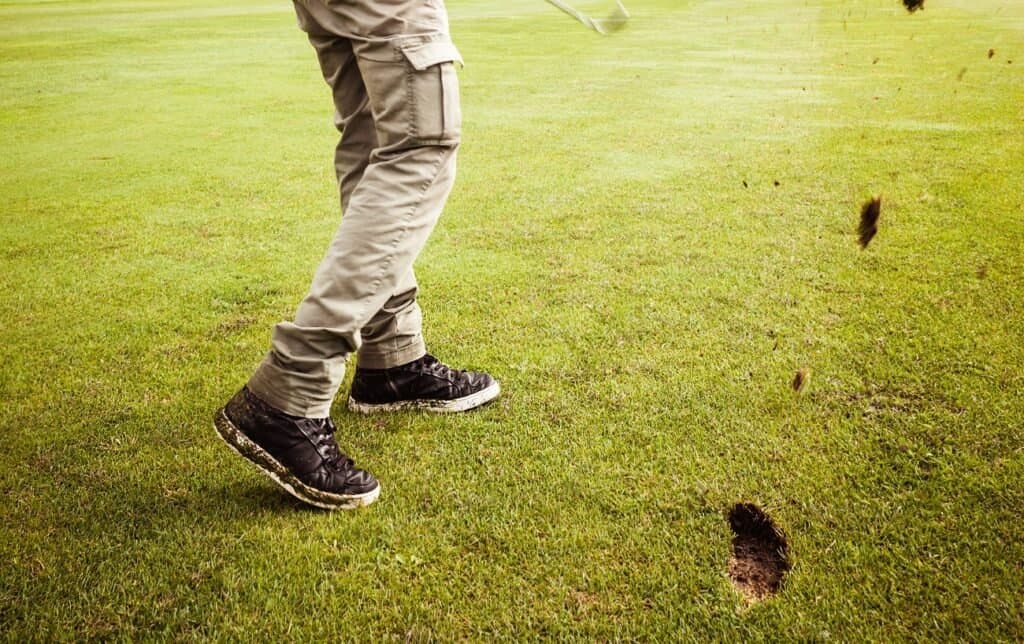
There are two common swing patterns for golf: Out-to in and out-to-out. You can learn these swing patterns, no matter if you are a beginner or a pro golfer. In-to out swing path and Clubface angles at impact will be discussed in this article. Ben Hogan’s technique for driving the golf club will also be discussed. First, measure your divots.
Out-to–in golf swing paths
A golf swing that is too out-of-control can be associated with high-level golfers. They are too heavy on their upper bodies and too focused on their backswing. This can lead to big slices and violent hooks. This can be prevented by a proper set-up. To find the most efficient out-to-in path, begin by aligning your feet, hips and shoulders with the target.
A golf swing path that is right-to–left produces a left-to–right shot, also known as a draw. A draw is longer and wider than a fade and transfers more energy into the ball. While an outside-to-in swing path creates a broader clubface, it loses power at impact. This swing path is also known as an "over the top" or slice.

Clubface angle at impact
The most important factor that determines the trajectory of a ball is its clubface angle at impact. The clubface should be angled straight in relation to the ball's path. Closed clubfaces will produce a curve in the ball's direction. This is because the clubface angle at impact is not parallel to the path of the ball.
While it has been widely believed that the clubface angle at impact affects the flight of the ball, recent research indicates that it may be as much as 50% more important. Numerous studies, including Dr. Michael Malaska's, have confirmed this result. In addition, the right hand plays a big role in covering the golf ball and generating the proper forward shaft lean for optimal compression. While it should not be active during the swing, the right side can have a significant influence on the clubface angle and impact.
Open clubface at Impact
It doesn't matter if your game is right-to–left or in-to–out, your clubface angle at impact can affect the flight of your ball. An open clubface means that the face is open when the club strikes the ball. A closed clubface means that the ball will fly out-of-bounds. By improving your swing mechanics, you can improve your shots. This article will give you some simple tips to correct your open clubface at impact.
An open clubface will give your shot more loft while setting up your swing. A closed clubface reduces loft and lowers the trajectory of your shot. It is crucial to have the right clubface angle as it can greatly impact your shot distance. A wide open clubface at contact can result from poor set-up and poor rotating. A wide open clubface at impact can result from hip sliding and premature extension. A lack of shaft lean and open clubface at impact can also lead to open clubfaces.

Ben Hogan's trick for driving the golf balls
Ben Hogan is famous for his left-hand swivel. He also has the ability to kick the ball into the air by using his unique method of performing his backswing. Hogan had a difficult time hooking the ball when he was young, but soon realized that the key to his success was using a slightly cupped left wrist at his top of his backswing. A weak left hand grip and cupped left wrist meant Hogan didn't reach too far left.
Most players try to copy Hogan's famous "ball strike", but very few succeed. Hogan, unlike many of golf's most famous players was never able to putt well. Hogan once suggested that putting be removed from golf altogether. Because he was a better putter than a ball striker, this is probably why he suggested that putting be eliminated altogether. In addition, he favored the MacGregor Spur Putter, which was considered advanced at the time.
FAQ
What kind of clothing do I need to wear on the course
You must dress appropriately when playing golf. Wear these:
-
Shoes that fit comfortably - Your feet should be snugly supported by the shoes you choose. They should provide support and stability.
-
Lightweight pants or shorts – Shorts should cover your knees, thighs and ankles. Trousers should have enough length to allow you to bend easily.
-
Long-sleeved shirt: Your shirt should protect your skin from the sun. It should provide good ventilation.
-
Sweatpants and shorts – Pants should be loose fitting and comfortable. They should allow you freedom of movement.
-
Socks: Choose socks that feel soft, comfortable and stylish.
-
Hat - Choose a hat that fits well. It should cover your neck and ears.
-
Sunscreen lotion before you head out on the golf course
What happens at a golf round's end?
At the end a round, the person with the lowest score wins. If two people tie for the first place, they win.
If there are more than three players who tie for the first place after 18 holes they will share the money.
If only two people remain tied after 18 holes, the tournament committee decides who gets the prize money.
How is golf scored?
The scorecard is divided into four different categories: Stroke Play, Par 3, Par 4, and Par 5. Each category can further be broken down into strokes. To attain par, a golfer must play 18 holes (Par72).
The lowest score wins.
What's the difference between driving ranges and putting greens?
A driving range allows players to practice hitting balls from distances of 50 yards to 300 yards. For putting practice, players can use putting greens.
How do I learn to play golf?
Learning to play golf requires practice and patience. You can improve your game by practicing. Here are some tips to help you:
-
Practice regularly. Golf requires constant attention and concentration. If you don't practice enough, you will not improve your skills.
-
Play with people who can play. Playing with other people will help you develop your style of play.
-
Before you start playing, make sure to read up on golf. This will give you an idea about what you need to do.
-
Don't try to master everything all at once. Begin by focusing your attention on one aspect. Focus on one aspect of your game, such as improving your putting skills or learning how to chip. Move on to the next area of your game when you feel confident.
-
Take lessons. Take lessons to learn how to position yourself, swing speed, posture, and many other important aspects.
-
Try new techniques. Experiment with different grips, stances, swings, and so on.
-
Keep records. Record your scores and keep track of your progress. This way, you can identify areas where you need improvement.
-
Join a local Golf Club. Many clubs offer lessons at no cost. Many clubs offer free lessons and have helpful members who are willing to help newcomers.
-
Locate a coach. You can get guidance from a professional coach on certain areas of your game.
Statistics
- They do this by means of assessing and rating courses according to the average good score of a "bogey golfer," a player with a handicap of around 20. (en.wikipedia.org)
- Professional golfers typically make between 60% and 70% of greens in regulation. (en.wikipedia.org)
- In the United States, the number of people who play golf twenty-five times or more per year decreased from 6.9 million in 2000 to 4.6 million in 2005, according to the [51] (en.wikipedia.org)
- In the United States, women made up 25 percent of golfers in 2021, which was up from 19 percent in 2011, and junior female golfers account for 35 percent or 1.1 million golfers.[50] (en.wikipedia.org)
External Links
How To
How to hit the perfect Bunker Shot
A bunker shot, a type or golf shot that aims at a particular spot on the green (the holes) to ensure your ball hits the ground without bouncing off of the surface, is one example. You can take advantage of the slope on the green to do this. The goal is to direct the ball as far as possible towards hole.
You want to play golf in the best possible line to get to your target point. It is important to consider factors like distance to the target, terrain type, whether the ball has to bounce off of the ground or fly straight and weather conditions.
You must understand the physics of bunker shots in order to make them perfect. First, decide if you're going uphill and downhill. A drawing club is required if you are facing uphill. You should swing with a fade when you're looking downhill. Next, determine the speed at which your body can move to stop the ball hitting the green. This can be done using the angle between you and the ball. Finally, you'll need to know the size of the bunker you're aiming at.
Once you know these things, you are ready to start swinging. You should swing hard enough to allow the ball to pass the face of your club head, but slow enough so that it doesn't bounce off the green. You can start your approach once you have found the right speed, trajectory and direction. Slowly approach the ball until you can see the landing area. After you have taken one last look at your ball, release it. If all goes according to plan you will have a flawless bunker shot.